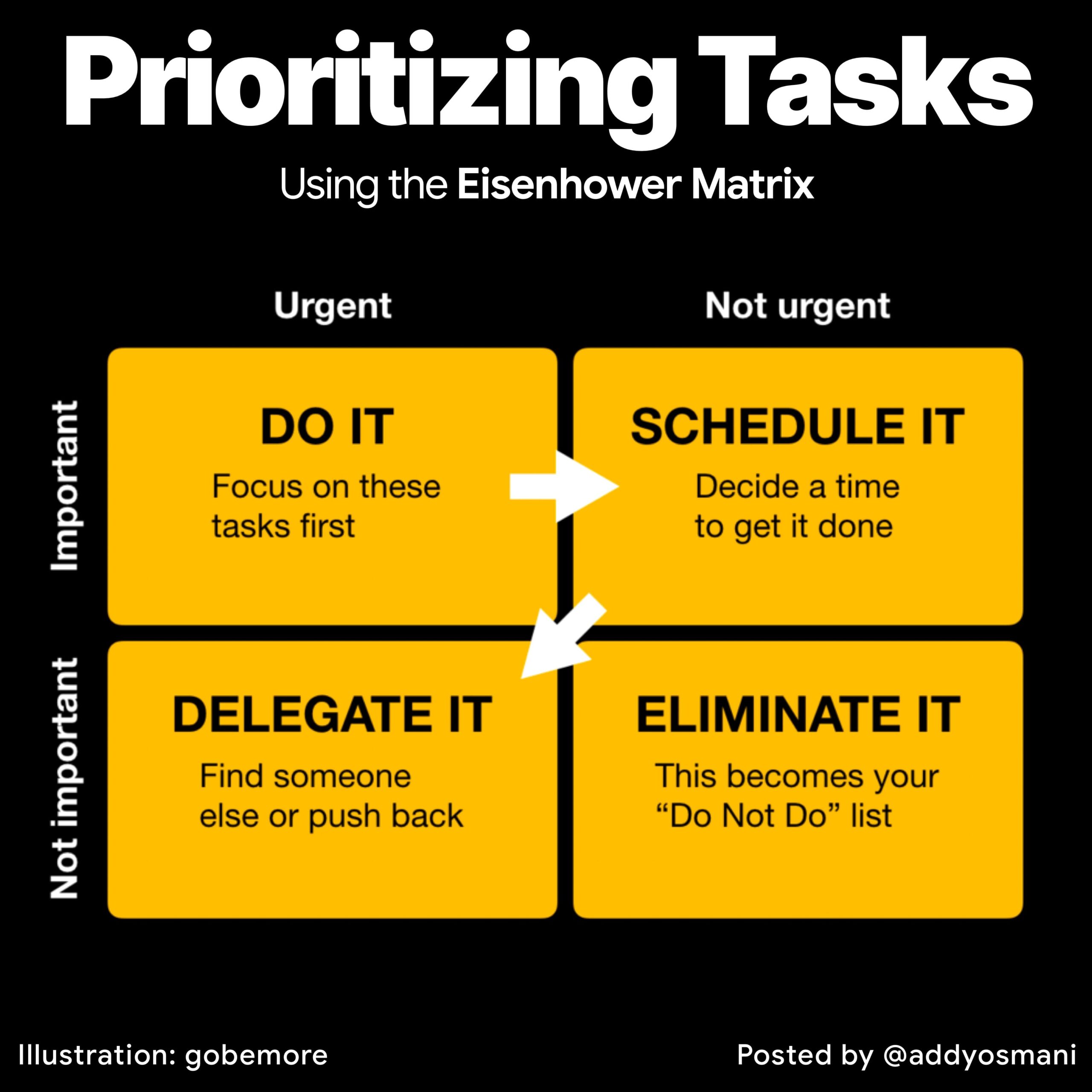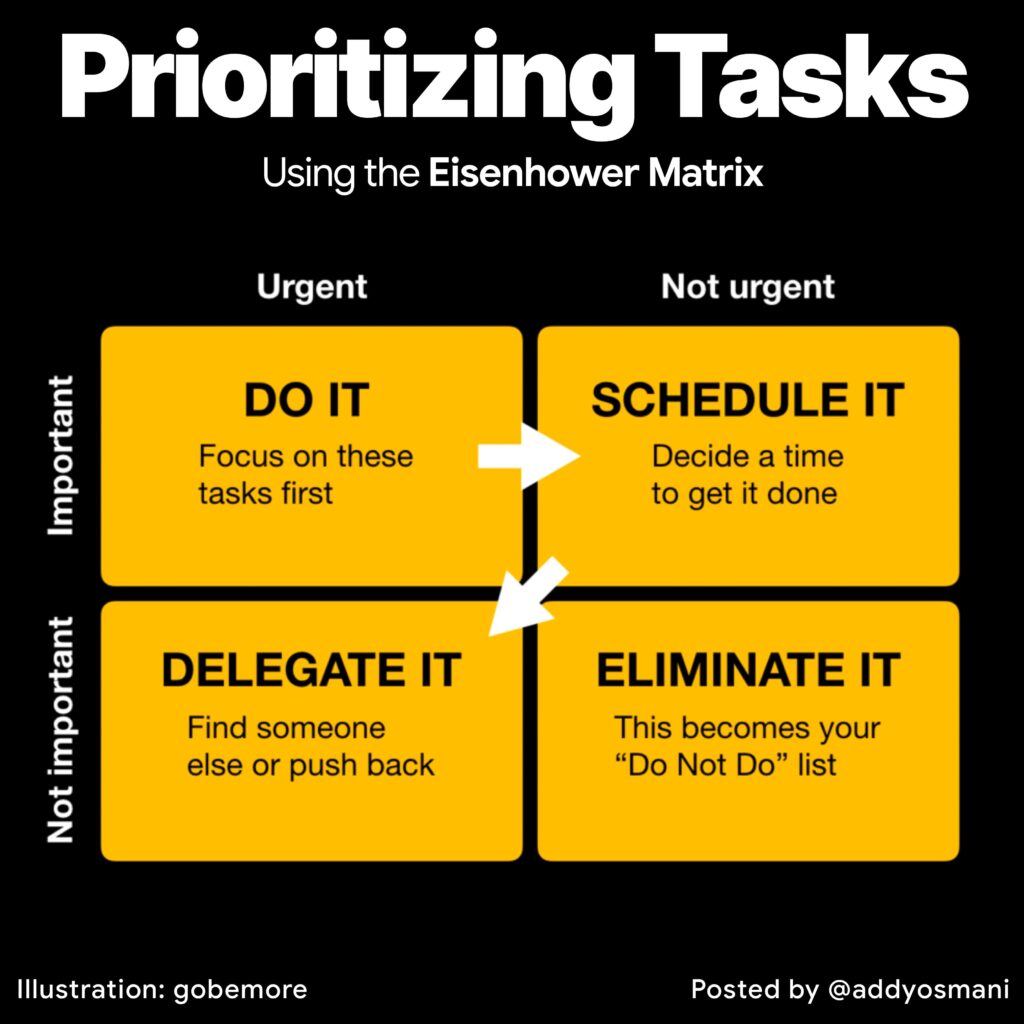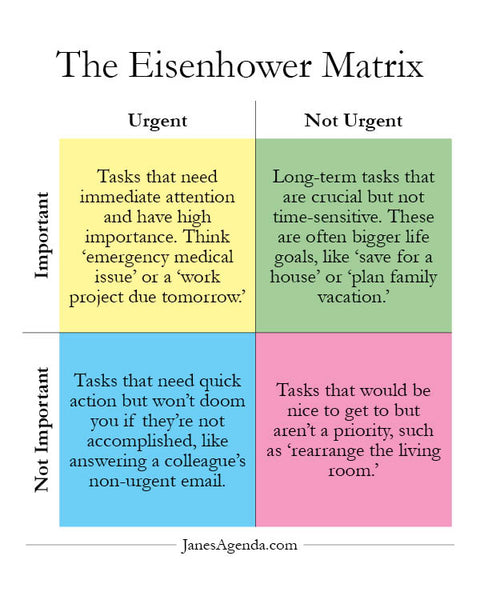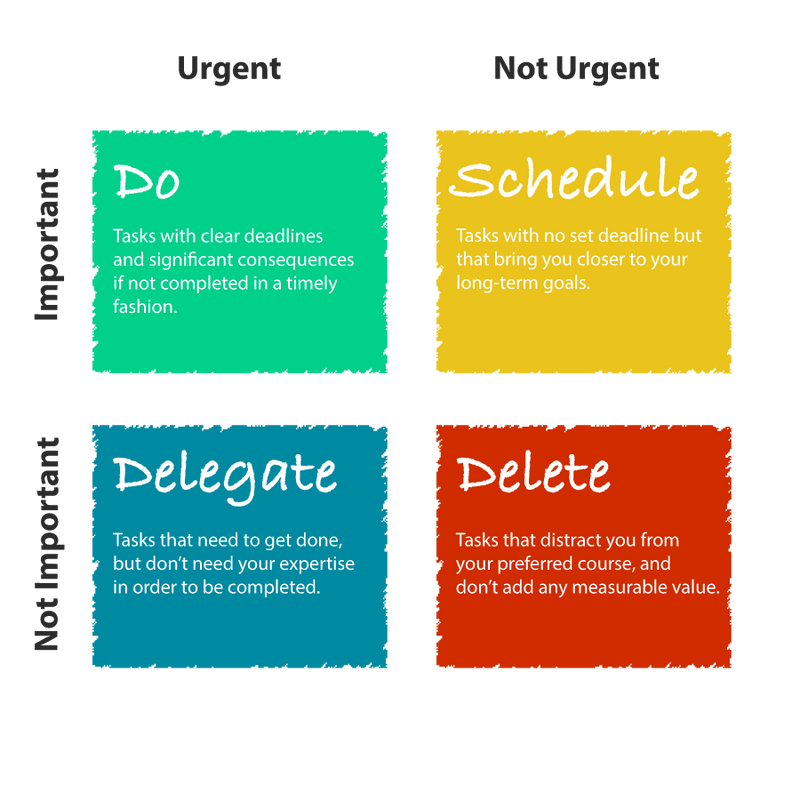Do you ever feel like you’re drowning in a sea of tasks, constantly busy but rarely making progress on what truly matters? You’re not alone. In today’s hyper-connected world, our to-do lists seem to grow endlessly, filled with emails, deadlines, errands, and aspirations. The sheer volume can be paralyzing, leading to stress, missed opportunities, and a constant sense of being overwhelmed. But what if there was a simple, yet profoundly effective, method to cut through the noise, reclaim your time, and direct your energy towards your most important goals? Enter The Eisenhower Matrix: How to Prioritize Your Tasks. This powerful time management tool, championed by former U.S. President Dwight D. Eisenhower, is a game-changer for anyone seeking to improve their focus, streamline their workflow, and achieve a clearer sense of purpose in their daily efforts.
Unpacking the Genius of Dwight D. Eisenhower
Before diving into the mechanics of The Eisenhower Matrix: How to Prioritize Your Tasks, let’s briefly touch upon its origin. Dwight D. Eisenhower, a five-star general and 34th U.S. President, was known for his extraordinary productivity and decision-making abilities. Faced with immense pressure and countless responsibilities, he needed a way to manage critical issues without getting bogged down by less important demands. His philosophy, often quoted, was:
“I have two kinds of problems: the urgent and the important. The urgent are not important, and the important are never urgent.”
While the quote itself might be slightly misattributed in its exact wording (he likely said something similar), the underlying principle formed the bedrock of what we now call The Eisenhower Matrix: How to Prioritize Your Tasks. It’s a method designed not just for presidents and generals, but for anyone – from students grappling with assignments to professionals managing complex projects – to make smarter choices about how they spend their most valuable resource: their time. It’s about moving beyond simply “doing” to “doing the right things.”
The Core Principle: Urgent vs. Important
At its heart, The Eisenhower Matrix: How to Prioritize Your Tasks is a simple 2×2 grid that helps you categorize your tasks based on two key criteria: urgency and importance. Understanding the difference between these two is the first step to unlocking true productivity and mastering your time management.
- Urgent tasks demand immediate attention. They are “now” tasks, often with impending deadlines or direct consequences if ignored. They typically have a reactive nature, pulling you in. Think ringing phones, looming project deadlines, or unexpected emergencies.
- Important tasks contribute to your long-term goals, values, and mission. They are the activities that, when completed, help you achieve significant results and make a meaningful impact. These tasks often require proactive effort and strategic planning. Examples include planning for the future, building relationships, personal development, or working on strategic initiatives.
The critical insight from Eisenhower is that urgent doesn’t always mean important, and important often isn’t urgent until it becomes a crisis. Our natural inclination is often to react to the urgent, which can leave little time for the truly important. The matrix forces us to consciously evaluate and categorize, transforming our chaotic to-do lists into a structured workflow.
Deconstructing the Four Quadrants
The magic of The Eisenhower Matrix: How to Prioritize Your Tasks lies in its four distinct quadrants, each dictating a specific action. Let’s break them down:
1. Quadrant 1: Urgent & Important (Do First)
These are your crisis management tasks. They demand immediate attention and contribute significantly to your goals. Think of them as the “firefighting” quadrant.
- Characteristics: Deadlines looming, critical project milestones, emergencies, urgent client requests, health crises.
- Action: Do these tasks immediately. They are your top priorities.
- Examples: Completing a report due in an hour, dealing with a critical system outage, attending an unavoidable last-minute meeting, resolving a significant conflict.
- Why it’s crucial: Neglecting these tasks can lead to serious consequences. While necessary, spending too much time here can be a sign of poor planning and a lack of proactive work in Quadrant 2. The goal isn’t to live here, but to manage it effectively when necessary.
2. Quadrant 2: Not Urgent & Important (Schedule)
This is the quadrant of strategic planning and long-term growth. These tasks contribute significantly to your goals but don’t have an immediate deadline. This is often called the “quality” or “proactive” quadrant.
- Characteristics: Planning, relationship building, personal development, preventative maintenance, learning new skills, strategic thinking, exercise, preparing for future projects.
- Action: Schedule these tasks for later. Block out dedicated time in your calendar for them.
- Examples: Working on your long-term goal setting, developing new skills, networking, exercise, strategic business development, regular check-ins with team members, reading industry reports.
- Why it’s crucial: This is where true growth and impactful work happen. Investing time here reduces the likelihood of tasks escalating into Quadrant 1 emergencies. As a productivity coach, I emphasize that maximizing time in this quadrant is key to reducing stress and achieving meaningful success. This is where you proactively shape your future, rather than just reacting to the present.
3. Quadrant 3: Urgent & Not Important (Delegate)
These tasks demand immediate attention but don’t significantly contribute to your long-term goals or are not aligned with your core responsibilities. They often feel like interruptions or demands from others.
- Characteristics: Some emails, certain phone calls, minor requests from colleagues, trivial but time-sensitive errands, specific administrative tasks that could be handled by others.
- Action: Delegate these tasks if possible. If delegation isn’t an option, minimize the time spent on them.
- Examples: Responding to non-critical emails, arranging a routine meeting, helping a colleague with a minor issue that isn’t central to your work, picking up dry cleaning during a busy workday.
- Why it’s crucial: These tasks can be major time-wasters if not managed correctly. Learning to say “no” or effectively collaborate by passing on tasks that don’t require your unique expertise is a vital skill. This frees up your time for Quadrants 1 and 2.
4. Quadrant 4: Not Urgent & Not Important (Eliminate)
These tasks are pure distractions. They offer little to no value, don’t contribute to your goals, and often serve as procrastination tools.
- Characteristics: Mindless scrolling on social media, excessive TV watching, unimportant busywork, endless trivial conversations, playing games (when it takes away from important tasks).
- Action: Eliminate these tasks. Cut them out of your schedule entirely or drastically reduce the time spent on them.
- Examples: Excessive binge-watching, playing mobile games during work hours, getting lost in internet rabbit holes, unnecessary gossip sessions.
- Why it’s crucial: This quadrant is a black hole for productivity. Identifying and eliminating these activities creates more time for what truly matters, improving your workflow and overall efficiency.
How to Get Started with The Eisenhower Matrix in 3 Simple Steps
Ready to put The Eisenhower Matrix: How to Prioritize Your Tasks into action? Here’s a straightforward guide to integrating this powerful time management technique into your life:
Step 1: Brainstorm and List ALL Your Tasks
The first step is to get everything out of your head and onto paper (or a digital list). Don’t filter or prioritize yet – just list every single task, commitment, and idea swirling in your mind. This could include work projects, personal errands, calls to make, emails to send, household chores, study topics, long-term goals, and even things you’ve been putting off. Be as comprehensive as possible.
- Tip: Give yourself 10-15 minutes for this brain dump. Don’t worry about order; just capture everything.
- Example:
- Finish presentation for Friday meeting.
- Reply to Sarah’s email about Q3 report.
- Plan next week’s team sprint.
- Call mom.
- Research new project management software.
- Go grocery shopping.
- Schedule dentist appointment.
- Scroll social media.
- Watch new series on Netflix.
- Prepare for performance review next month.
Step 2: Categorize Each Task into the Matrix
Now, with your complete list in hand, go through each item and assign it to one of the four quadrants based on its urgency and importance. Be honest with yourself! This is where the real evaluation happens.
- Ask for each task: Is this urgent? (Does it need to be done now or very soon?)
- Then ask: Is this important? (Does it contribute to my long-term goals or values?)
- Example Categorization:
- Urgent & Important (Do First): Finish presentation for Friday meeting (deadline).
- Not Urgent & Important (Schedule): Plan next week’s team sprint (proactive planning), Research new project management software (skill development/efficiency), Prepare for performance review next month (career growth).
- Urgent & Not Important (Delegate/Minimize): Reply to Sarah’s email about Q3 report (might be quick, or delegate if it’s not my primary responsibility), Go grocery shopping (can be done quickly or by someone else).
- Not Urgent & Not Important (Eliminate): Scroll social media (distraction), Watch new series on Netflix (unless it’s a scheduled relaxation, it’s often a time-waster).
- Special Cases: “Call mom” and “Schedule dentist appointment” might shift quadrants based on context. If mom needs urgent help, it’s Q1. If it’s a routine check-in, it might be Q2 (relationship building). Dentist appointment overdue? Q1. Routine check-up? Q2 or Q3.
Step 3: Take Action Based on Quadrant Assignments
Once categorized, you have a clear roadmap. Now, act accordingly:
- Quadrant 1 (Do First): Tackle these immediately. Give them your full attention until they’re complete.
- Quadrant 2 (Schedule): Block out specific time in your calendar for these. Treat these appointments with yourself as seriously as you would with others. This is your primary area for proactive work.
- Quadrant 3 (Delegate): Identify who can take these off your plate. If delegation isn’t possible, allocate minimal time and set strict boundaries. Can a virtual assistant, a colleague, or a family member handle it?
- Quadrant 4 (Eliminate): Cross these off your list. Seriously. If you can’t eliminate them completely, drastically reduce your engagement with them. Consider how much time these activities steal from your truly important work and personal life.
This structured approach transforms your chaotic to-do list into an actionable plan, significantly boosting your efficiency and overall productivity.
Integrating The Eisenhower Matrix into Your Daily Routine
Adopting The Eisenhower Matrix: How to Prioritize Your Tasks isn’t a one-time exercise; it’s a continuous practice. Here’s how to weave it seamlessly into your daily life and maintain peak focus:
1. Daily & Weekly Reviews
- Morning Ritual: Start each day by quickly reviewing your matrix. What absolutely must get done from Q1? What Q2 tasks are scheduled for today? This sets your intentions and priorities for the day.
- Weekly Planning: Dedicate 15-30 minutes each week to conduct a more thorough matrix review. List new tasks, re-evaluate existing ones, and consciously schedule your Q2 work for the upcoming week. This proactive approach to goal setting prevents urgent tasks from spiraling out of control.
2. Leverage Tools for Enhanced Workflow
While you can use pen and paper, many digital tools can enhance your matrix workflow:
- Task Managers: Tools like Todoist, Trello, Asana, or Microsoft To Do allow you to create lists, add tags for “Urgent,” “Important,” “Delegate,” and assign due dates. Some even allow for custom fields to directly label quadrants.
- Calendar Apps: Block out specific times in Google Calendar, Outlook Calendar, or Apple Calendar for your Q1 and especially your Q2 tasks. Treat these blocks as non-negotiable appointments.
- Notes Apps: Simple apps like Notion, Evernote, or even Apple Notes can be used to create your matrix and quickly drag and drop tasks between quadrants.
- Dedicated Matrix Apps: Some apps are specifically designed around the Eisenhower Matrix, offering visual representations and guided prioritization.
3. Mastering Delegation and Collaboration
Effective collaboration and delegation are cornerstones of success with the Eisenhower Matrix.
- Communicate Clearly: When delegating Q3 tasks, provide clear instructions and expectations.
- Empower Others: Trust your team members or family to handle delegated tasks. Don’t micromanage.
- Set Boundaries: Learn to say “no” politely but firmly to Q3 and Q4 requests that don’t align with your priorities. Explain that you’re focusing on high-impact work. This protects your focus.
4. Dealing with Interruptions and Unexpected Tasks
Life is unpredictable. New tasks and interruptions will always arise. When they do:
- Quickly Assess: Immediately ask: “Is this urgent? Is this important?”
- Re-categorize: If it’s urgent and important, it might bump a less critical Q1 task. If it’s urgent but not important, see if you can quickly address it or delegate it. If it’s not urgent and not important, resist the urge to drop everything and tackle it.
- Batch Similar Tasks: Group similar Q3 tasks (e.g., replying to non-critical emails) and dedicate a specific time block to them.
By consistently applying these practices, you’ll find yourself shifting from a reactive stance to a proactive one, spending more time on the truly meaningful work that drives your goal setting and personal fulfillment.
The Power of Prioritization: Beyond the Matrix
The beauty of The Eisenhower Matrix: How to Prioritize Your Tasks extends beyond simply organizing your to-do list. It instills a fundamental shift in mindset. You stop being a passive recipient of tasks and become an active architect of your day.
- Reduced Stress: By clearly identifying what truly matters, you alleviate the mental burden of an overwhelming to-do list. You know what to do next, reducing decision fatigue.
- Increased Focus: Eliminating Q4 tasks and scheduling Q2 work allows for deep work, leading to higher quality output and greater satisfaction.
- Greater Accomplishment: You consistently work on tasks that contribute to your long-term goal setting, leading to genuine progress and a sense of achievement.
- Better Work-Life Balance: By being more efficient during work hours, you create more free time for personal pursuits and relaxation, further enhancing your overall well-being.
As Noah Evans, I’ve seen firsthand how this simple yet profound framework transforms individuals and teams. It’s not about working harder; it’s about working smarter, with intent and clarity. The Eisenhower Matrix: How to Prioritize Your Tasks is your secret weapon against the chaos, empowering you to make complex tech (and life!) simple by bringing structure to your efforts. Embrace it, and watch your productivity soar.
Frequently Asked Questions (FAQ)
Q1: Is The Eisenhower Matrix only for work-related tasks?
Absolutely not! While its origins are rooted in high-stakes decision-making, The Eisenhower Matrix: How to Prioritize Your Tasks is incredibly versatile. You can apply it to personal goals, household chores, academic studies, and even relationship management. For instance, planning a family vacation (Q2), replying to a quick text from a friend (Q3), or dealing with a leaky faucet (Q1) can all be categorized using the matrix. It’s a holistic time management tool.
Q2: What if everything seems “Urgent and Important”?
This is a common struggle and often indicates a need for better planning, delegation, or boundary setting. If your Quadrant 1 is constantly overflowing, consider these points:
- Are you accurately assessing importance? Sometimes tasks feel important due to perceived pressure, but don’t actually move your long-term goals forward.
- Are you proactively scheduling Q2 tasks? Many Q1 emergencies are preventable if adequate time was spent on Q2 planning, maintenance, and preparation.
- Are you delegating enough? Could some “urgent” tasks be handled by someone else, freeing you up for truly important work?
- Are you saying “no” enough? Sometimes, we take on too much. Review your commitments and see if you can reduce your workload.
- Review your goals: If everything is urgent and important, you might have too many goals or unclear priorities. Revisit your goal setting to ensure alignment.
Q3: How often should I use The Eisenhower Matrix?
For optimal results, I recommend a multi-tiered approach:
- Daily Quick Check: At the start of each workday (or study session), briefly review your top priorities using the matrix.
- Weekly Deep Dive: Dedicate 15-30 minutes each week (e.g., Friday afternoon or Monday morning) to map out your tasks for the upcoming week. This is where you proactively schedule your Q2 work.
- Monthly Review: Consider a monthly review for larger goal setting and strategic planning, ensuring your current tasks align with your long-term vision.
The key is consistency. Make it a habit to continually assess and re-prioritize.
Q4: Can I combine The Eisenhower Matrix with other productivity methods?
Yes, absolutely! The Eisenhower Matrix: How to Prioritize Your Tasks is a framework for prioritization, not a rigid, all-encompassing system. It complements methods like:
- Getting Things Done (GTD): Use GTD for capturing and processing all your tasks, then apply the Eisenhower Matrix to prioritize within your “Next Actions” list.
- Pomodoro Technique: Once you’ve identified your Q1 and Q2 tasks, use Pomodoros to focus intensely on completing them in focused bursts.
- Time Blocking: Integrate your Q2 scheduled tasks directly into your time-blocked calendar.
The matrix provides clarity on what to do, while other methods help with how to do it efficiently. It’s a powerful tool to enhance any existing workflow.
See more: The Eisenhower Matrix: How to Prioritize Your Tasks.
Discover: AskByteWise.



